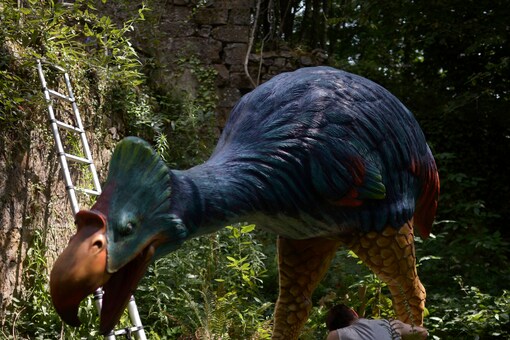
The 120-million-year-old bird fossil is called Yuanchuavis Kompsosoura. (Representational image: Reuters)
The Institute of Vertebrate Paleontology and Paleoanthropology of the Chinese Academy of Sciences, Beijing, and the Field Museum of Natural History, Chicago have found the remains of birds that have retained a few Dinosaurs traits.

As if the debate over the evolution of dinosaurs was not complex enough, a new layer has been uncovered. Scientists from China have discovered the fossil of a bizarre creature that dates back to 120 million years. The Institute of Vertebrate Paleontology and Paleoanthropology of the Chinese Academy of Sciences, Beijing, and the Field Museum of Natural History, Chicago have found the remains of birds that have retained a few Dinosaurs traits even though the evolution has split dinosaurs and birds million years ago. This 120-million-year-old bird fossil is called Yuanchuavis Kompsosoura due to Early Cretaceous deposits in Liaoning Province, northeastern China.

The study published on eLife found that most birds in today’s time can lift the upper beak independently. This is because the birds are now endowed with a series of mobile joints and bending zones in the skull. This fossil was different. After running a computed tomography on the skull of the toothed bird, the authors of the study Min Wang, Thomas A Stidham, Jingmai K O’Connor, and Zhonghe Zhou, found these joints absent. This is the first time this case of absence was noted. Yet there were hints of how they may have evolved later.

Scientists also reconstructed the skull showing an evolutionary and functional conservation of the temporal and palatal regions. The former is the part that sits behind the ears, while the latter is the region of the roof of the mouth that separates the oral cavity from the nasal cavity. These parts retained the ancestral theropod dinosaurian configuration.
The lead and corresponding author of the study, Professor Wang Min from IVPP said, “We still don’t know which chain of bones was completed and freed first in bird evolution, or even if it was all completed together.” The Chinese Academy of Sciences reported the Professor as saying, “What we see in dinosaurs and the earliest birds like the enantiornithine Yuanchuavis is that these chains are missing connections or are locked in place because they connected to more bones that would stop most movements.”

Geometric morphometric analysis of the palatal region suggested that loss of the jugal process demonstrated the first step in the structural modifications. This has led to the kinetic crown bird condition. The jugal process is an important temporal bone process forming the zygomatic arch.